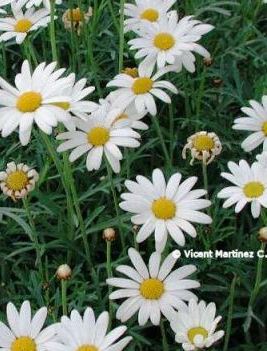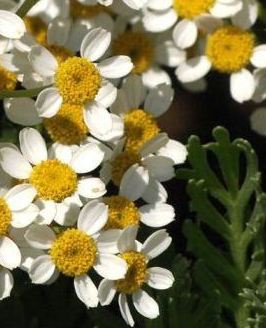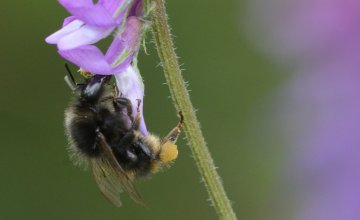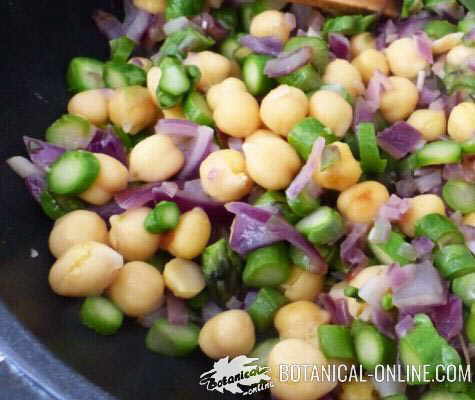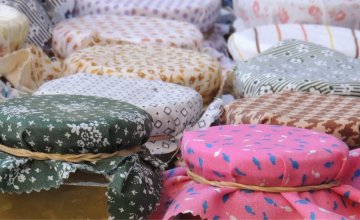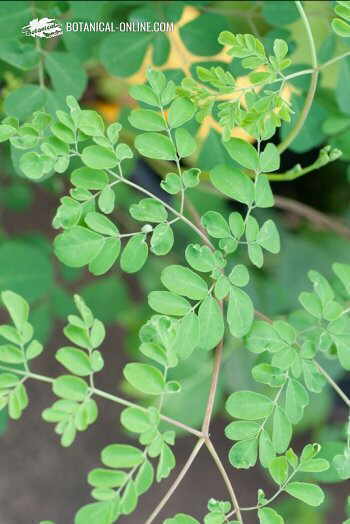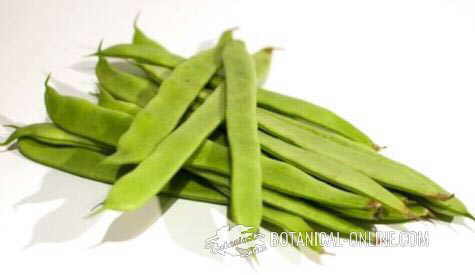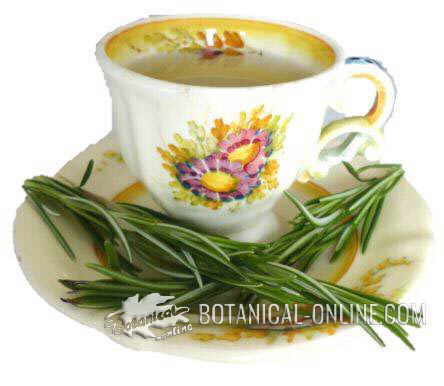Contents
Varieties and types of flowers that are or look like daisies
What are daisies?
Daisies are herbaceous plants of the Compositae family, which is characterized by a yellow flower bud. The true daisy flower comes from plants of the genus Bellis.
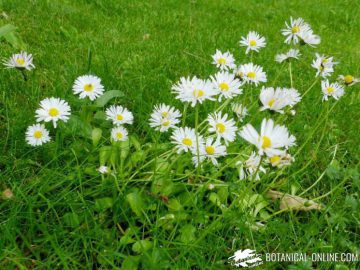
All daisies of the genus Bellis are native to Europe, and have become naturalized in many regions of Asia Minor, New Zealand and North America, initially being exported as ornamental plants. Currently, these plants are a common weed in grass fields.
Botanical aspects of daisies
In reality, the daisy is not one flower: it is many tiny ones. They belong to the composite family (currently called “Asteraceae”) and, as the name suggests, they are composed of many tiny flowers, arranged in flower heads.
Therefore, daisies are inflorescences, composed of tiny yellow flowers, and surrounded by white, pink or red ligules, which look like petals.
Types of daisies
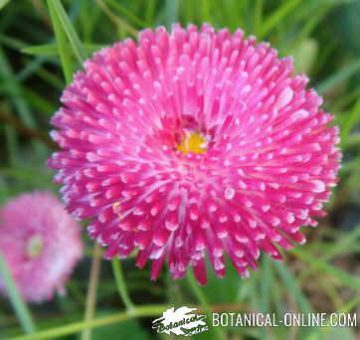
There are different types of truedaisies, that is, those of the Bellis genus, among which the following stand out:
- Common daisy (Bellis perennis): Small perennial plant, very common in Europe and Asia Minor. It blooms in spring. It is a common weed in meadows and fields.
- Annual daisy (Bellis annua): Annual daisy that blooms in winter, common in Europe, common in Europe.
- Southern daisy (Bellis sylvestris): Wild, perennial daisy, which differs by having having larger leaves and flowers than the two previous ones.
Daisies that are actually chrysanthemums
It is also possible that some plants belonging to genus Chrysanthemum are commonly called “daisies”. Chrysanthemum are a genus of flowers from Asia, of the Compositae family. This genus includes about 40 different species.
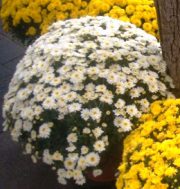
In some classifications, many plants assigned to the genus Chrysanthemum have been distributed among other genera, such as: Argyranthemum, Dendranthema, Leucanthemum and Tanacetum.
For this reason, many of the following plants have a double scientific name:
- Oxeye daisy or dog daisy (Leucanthemum vulgare = Chrysanthemum leucanthemum): It is clearly distinguished by its large flowers, with white petals and bright yellow flower buds. It is usually the most common in fields and roads. Although it is commonly called daisy, it is actually a kind of chrysanthemum.
- Max chrysanthemum (Leucanthemum maximum = Chrysanthemum maximum): Perennial plant with flowers reminiscent of daisies, with white petals and yellow flower buds. Large flowers, greater than 5cm. in diameter.
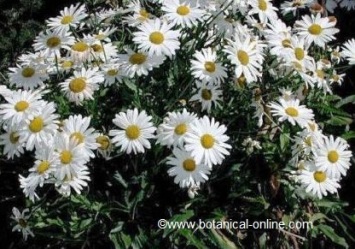
- Garland chrysanthemum (Chrysanthemum coronarium = Glebionis coronaria): Characteristic two-color “daisy”, white on the periphery of the petals, and golden yellow in the part closest to the disc floret. Common on the edges of Mediterranean roads and fields.

Paris daisy (Chrysanthemum frutescens) - Corn daisy (Chrysanthemum segetum = Glebionis segetum): Also known as corn marigold. Annual plant very common in dryland and sown fields (grain fields). Numerous branches crowned by golden flower heads.
- Paris daisy or marguerite daisy (Chrysanthemum frutescens = Argyranthemum frutescens): Species native to the Canary Islands, and currently distributed in gardens throughout Europe. It flowers throughout the year.
Tansy that look like daisies
- Feverfew (Tanacetum parthenium = Chrysanthemum parthenium): Daisy-like flower, although noticeably different. Marginal petals, not compact, and wider than those of the common daisy. It is a plant from the same family as tansy.

Tanacetum ferulaceum Tanacetum ferulaceum = Gonospermum ferulaceum): Another plant from the same family as tansy. Endemic species of the Canary Islands.
Other daisy-like plants
- Chamomile (Matricaria chamomilla = Chamomilla recutita): Popular medicinal plant with flowers reminiscent of daisies.
- Roman chamomile or chamomile (Chamaemelum nobile L.): Slightly different from the previous one. It also has medicinal properties.
- Corn chamomile (Anthemis arvensis): Annual plant, with white flowers reminiscent of daisies. Protruding floral head and flower of 2-3 cm in diameter.
- Yellow chamomile (Anthemis tinctoria): Herbaceous plant with golden flowers that grows spontaneously in fields. It is widely used in bouquet decoration.
- Stinking chamomile or mayweed (Anthemis cotula): Field flower very similar in appearance to chamomile. Flower that may remind of daisies.
- Pot marigold or common marigold (Calendula officinalis): Showy and pretty orange-yellow flower. This flower is often mistaken for some kind of chrysanthemum.
- Blacksamson echinacea (Echinacea angustifolia): Beautiful medicinal and gardening plant with pink or purple flowers. It stands out for their flower buds that resemble the spikes of a hedgehog.
- Dandelion (Taraxacum officinale): Popular medicinal plant and field grass that we can find together with daisies.
- African daisy (Arctotis stoechadifolia): Although it shares its name with daisies, it has very different characteristics.
- Italian aster (Aster amellus): flower reminiscent of daisies, but belongs to the Aster genus. Popular flowers in gardening, which can have different colors depending on the variety.
![]() More information on daisies
More information on daisies

